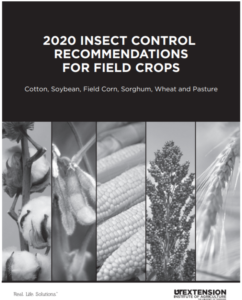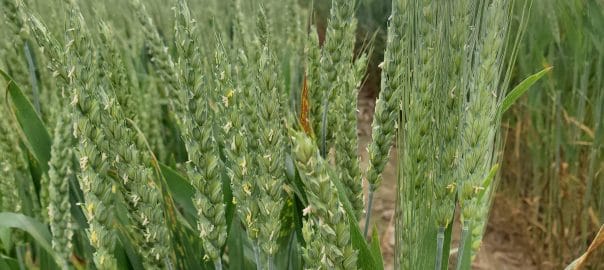 Last week was beautiful. As we were all in the midst of figuring out life during unprecedented times, nature appeared to thumb her nose at the COVID-19 pandemic; dogwoods in full bloom, crappie moving into shallow water, tree shaking gobbles echoing through t-shirt temperature mornings. But after almost a week of beautiful weather in West Tennessee, Easter brought a cold and unfortunately hazardous front through the area that will likely stay with us through the week. As I write this on Monday, the forecast for nighttime temperatures sits in the mid to lower 30s for the next several days. These temperatures likely summon difficult memories of the Easter Freeze of 2007. With that in mind, I wanted to pass along a little information that will hopefully put you at ease. Continue reading
Last week was beautiful. As we were all in the midst of figuring out life during unprecedented times, nature appeared to thumb her nose at the COVID-19 pandemic; dogwoods in full bloom, crappie moving into shallow water, tree shaking gobbles echoing through t-shirt temperature mornings. But after almost a week of beautiful weather in West Tennessee, Easter brought a cold and unfortunately hazardous front through the area that will likely stay with us through the week. As I write this on Monday, the forecast for nighttime temperatures sits in the mid to lower 30s for the next several days. These temperatures likely summon difficult memories of the Easter Freeze of 2007. With that in mind, I wanted to pass along a little information that will hopefully put you at ease. Continue reading
Category Archives: Wheat
Wheat Diseases and Fungicide Options
As temperatures warm up, be on the lookout for diseases developing. While disease levels in TN wheat has remained low that can change quickly. This article provides some general info on common wheat diseases one might see and management options.
Field Crop Insect Management Recommendations (PB 1768) Available Online
 The 2020 version of PB 1768, Insect Management Recommendations for Field Crops (and pasture), is now available. The guide has gone through substantial revision this year and closely matches the content on the mobile friendly Disease and Insect Field Guides at https://guide.utcrops.com/. Hard copies will be available soon and distributed through county extension offices and at various educational meetings.
The 2020 version of PB 1768, Insect Management Recommendations for Field Crops (and pasture), is now available. The guide has gone through substantial revision this year and closely matches the content on the mobile friendly Disease and Insect Field Guides at https://guide.utcrops.com/. Hard copies will be available soon and distributed through county extension offices and at various educational meetings.
2020 Middle Tennessee Grain Conference (Feb. 4, Tullahoma)
The 2020 Middle Tennessee Grain Conference will be held at the UT Space Institute in Tullahoma, TN on February 4th. Registration begins at 7:30 AM with the program starting at 8:30 AM. Participants are asked to pre-register at their local UT Extension Office until noon on January 31. Payment will also be accepted at the door. The $10 registration fee includes the program, refreshments, lunch, a conference cap, and a proceeding notebook.
Pesticide/dicamba re-certification will also be offered at 2:30 PM. Additional details, including the registration form are available at Middle TN Grain Conference Flyer.
Ryegrass Management in Wheat
With all the issues with ryegrass in wheat last year many are asking if there are any better options for control. The main issue is resistance. About 10 years ago resistance to ALS-inhibiting herbicides (Broadstrike, Finesse, Osprey) started showing up and now a decade later is a very common biotype in many fields. As a result, many moved to Axial to control ryegrass and it did a very good job for some time but in recent years ryegrass control has slipped as well. So what are some good options now?
One of the best options to use is a pyroxasulfone-based herbicide this fall. There are three herbicides with the active ingredient pyroxasulfone in them that now have labels for wheat in Tennessee. The three herbicides are Anthem Flex (pyroxasulfone + Aim), Fierce (pyroxasulfone + Valor) and Zidua (pyroxasulfone). In our research, all have provided very effective control of ryegrass.
Of course it would be too easy if they all had the same label directions in wheat but they differ a good bit. Many of those differences go to best management practices to avoid wheat injury. Here are some particulars:
Anthem Flex can be applied from PRE-emergence to early POST (3 tillers). The going rate would be 2.8 to 3 oz/A. The 2.8 oz/A rate provides 1.5 ozs of pyroxasulfone. Do not apply to coarse textured soils as the probability for loss of wheat stand is increased greatly. Do not apply on broadcast wheat due to increased potential for crop response. Plant in to good moisture and avoid spraying prior to a rainfall event during germination. In other words, if wheat is to be planted and there is a good chance of rain in the next two days, then go to ”Plan B” and apply it POST to avoid potential injury. The POST application should be applied up to 3 tillers of growth with 3 oz/A of metribuzin to clean up any emerged weeds.
Fierce can be applied up to 14 days before planting. A glance at the label would suggest it can be applied to wheat at a rate up to 3.0 oz/A. The 3 oz/A rate is not recommended in Tennessee. Research conducted in Georgia, North Carolina and Tennessee would suggest that a rate of 1.5 oz/A of Fierce has provided good weed control and greatly tamped down potential wheat injury. Other recommendations to avoid loss of wheat stand with Fierce is to plant wheat no-till at least 1” deep.
Zidua is labeled as a “delayed” PRE application for control of ryegrass. The definition of delayed PRE historically has varied but in Zidua’s case if the wheat has a ½” shoot it is good to go. In practical terms it would be 3 to 7 days after planting depending upon soil temperature and moisture. The rate of Zidua to use is 1 to 2 oz/A depending upon soil type. The trick is to apply Zidua after that ½” shoot but before most of the ryegrass or poa has emerged. If you can hit that timing, Zidua will do a great job of controlling those weeds.
Corn and Cotton Producers’ Prevented Planting Decision
Federal crop insurance programs have a prevented planting provision that can protect producers from the financial losses and risks associated with not being able to plant the intended crop within the desired planting period. Revenue Protection, Revenue Protection with Harvest Price Exclusion, Yield Protection, and Area Risk Protection insurance policies pay indemnities if producers were unable to plant the insured crop by a designated final planting date or within any applicable late planting period due to natural causes, typically drought or excess moisture. This post highlights several components of those provisions and provides a few examples.
Kevin Adkins, Graduate Research Assistant, Department of Agricultural and Resource Economics, University of Tennessee
**Christopher N. Boyer, Associate Professor, Department of Agricultural and Resource Economics, University of Tennessee 302-I Morgan Hall Knoxville, TN 37996 Phone: 865-974-7468 Email: cboyer3@utk.edu **Corresponding author Continue reading
A Reminder About Armyworms
Each year, about this time, I end up writing essentially the same article. There have been a couple of reports of armyworms in wheat. Nothing crazy but much of the wheat is still in the milk stage and would be susceptible to excessive defoliation. Occasionally, armyworms may even cut the heads, typically when populations are high. Yield loss is most likely if defoliation occurs during the milk stages, with Continue reading

Wheat in bloom – check your scab risk
Wheat is in bloom and when considering a fungicide application one needs to assess their risk for fusarium head blight (FHB) or head scab infection. Continue reading

